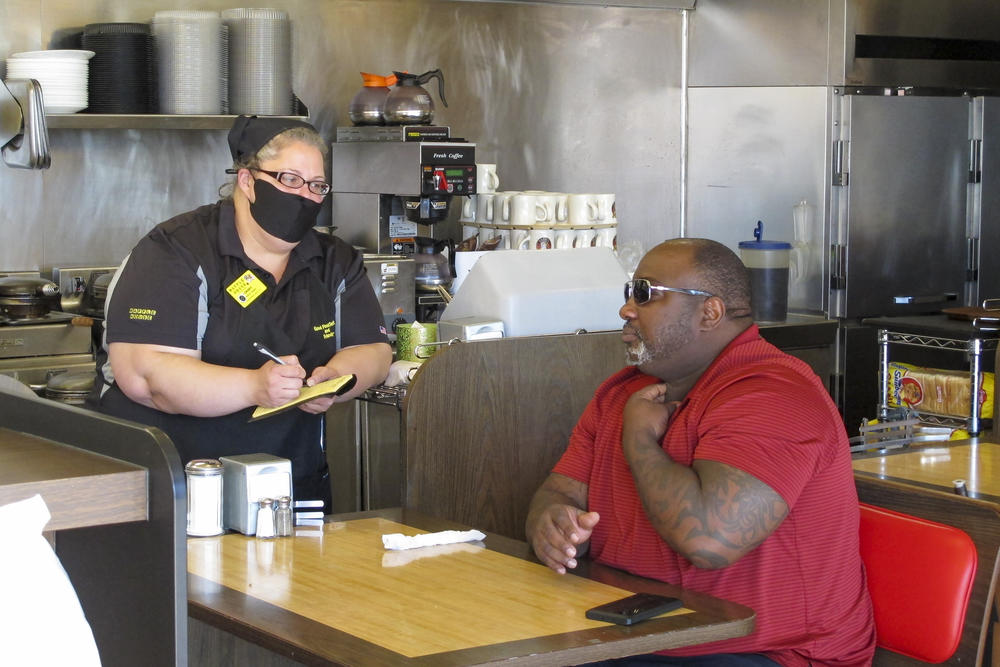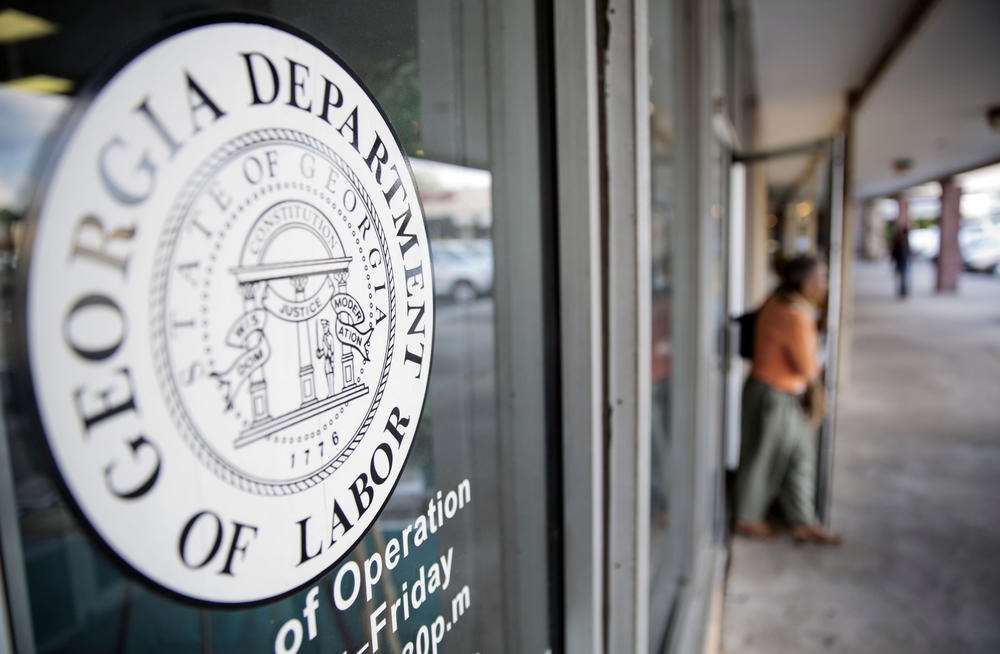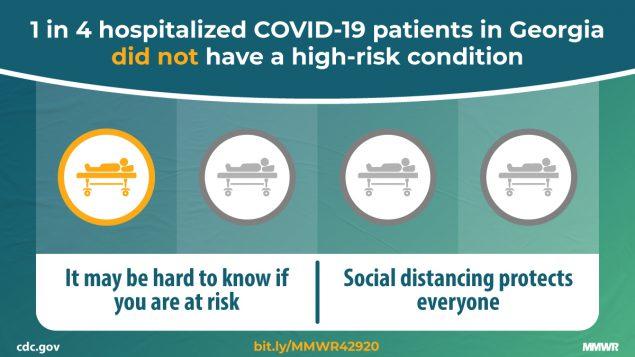Section Branding
Header Content
What Georgia’s Lifted Shelter-In-Place Order Means For You
Primary Content
While most Georgians are no longer ordered to stay in their homes, many businesses, schools and restaurants are choosing to stay closed.
Gov. Brian Kemp signed an executive order that extends Georgia’s public health emergency through June 12 and orders older and medically at-risk residents to stay at home.
Over the last week, nail salons and barbershops have been allowed to open their doors and restaurants could start offering in-person dining, so long as they follow dozens of extra health and safety rules designed to keep customers and employees safe.
The decision to ease statewide restrictions that have weakened the vicious spread of COVID-19 has been met with confusion, derision and opposition from health experts, politicians and the public alike.
As of 8:25 a.m. Friday, May 1, 1.55% of the state's 10.6 million residents have been tested for COVID-19. About 16% of those tested — 26,937 people — are positive for the virus. The reported death rate in Georgia is 4.22%, with 1,137 deaths confirmed, according to the Georgia Department of Public Health.
Here is the latest Georgia coronavirus news for Friday, May 1.
The main shelter-in-place order has expired
Kemp signed an order April 2 that required “all residents and visitors to the state of Georgia” to “shelter in place within their homes or places of residence, meaning remaining in their place of residence and taking every possible precaution to limit social interaction.”
That meant most Georgians had to stay in their homes unless they worked in critical infrastructure, were conducting essential services like getting food or groceries or medical care, or doing outdoor activities a safe distance away from others.
But now that the legal order is lifted, the governor still wants people to follow those guidelines.
“Moving forward, I am urging Georgians to continue to stay home whenever possible,” Kemp said in a video message Thursday. “I want to thank the people of our great state who heeded public health advice, afforded us time to bolster our healthcare infrastructure, and flattened the curve. We were successful in these efforts, but the fight is far from over.”
‘Medically fragile’ must still stay home
In that message, Kemp also said that a new shelter-in-place order for the "medically fragile" will run through June 12, concurrent with the state of public health emergency.
That includes:
- People 65 years of age or older
- People living in a nursing home or long-term care facility
- People with chronic lung disease
- People with moderate to severe asthma
- People with severe heart disease
- People who are immunocompromised
- People with class III or severe obesity
- People with diabetes, liver disease, or chronic kidney disease undergoing dialysis
This order requires the above-mentioned groups to stay inside their homes unless they are conducting essential services (like grocery shopping and food and medical care), performing necessary travel, working in critical infrastructure (like elections!) or engaging in the “minimum basic operations” for a business.
The order also prohibits people from visiting those that are sheltering in place except for medical services, support services, bringing food and supplies or end-of-life care.
What else is still in effect?
Kemp’s orders have also enacted a litany of changes to the way a large number of close-contact business operate through May 13.
There’s still a ban on large gatherings, meaning groups of 10 or more people cannot be in the same place unless there is a space of at least 6 feet between each person. Exceptions there include critical infrastructure, people you live with and restaurants/dining rooms that have no more than 10 patrons per 500 square feet.
Gyms and fitness centers must meet more than 30 criteria, including limiting locker room access, minimizing the number of cardio machines people can use and halting group classes.
Hair and nail salons, tanning facilities and massage therapists have to be appointment-only, limit the amount of people that can work, require patrons to wait in their cars until they can be served and dozens more precautions.
Restaurants can reopen their dining rooms sans buffets or salad bars, are encouraged to use paper menus and, ironically enough, are advised to prioritize takeout, delivery or curbside service.
Bars, live music venues and amusement parks are closed until at least May 13.
What will it look like if I go out in public?
Many small business owners and restaurants have told GPB News and the public they are not quite ready to open up yet. Some say the requirements to reopen are too costly to implement, especially after being shuttered for weeks. Others say they don’t feel comfortable about the health and safety of their staff or potential customers.
The Centers for Disease Control and Prevention recommends people wear face coverings when out in public to avoid catching the coronavirus and to avoid potentially spreading it if you are sick (especially if you’re asymptomatic).
"In accordance with our executive orders, businesses across the Peach State must continue to operate with strict social distancing and sanitation rules to keep customers and employees safe through May 13, 2020,” Kemp said in his video message. "The health and well-being of Georgians are my top priorities, and my decisions are based on data and advice from health officials. I will do what is necessary to protect the lives – and livelihoods – of our people.”
Over the last week, many businesses in Georgia have been allowed to reopen their doors, but few have opted to go that route. So while the shelter-in-place has been lifted, in practice many Georgians will still stay home, especially as schools are closed for the rest of the academic year.
If you do go out, make sure the businesses that you visit are following health and safety guidelines, wash your hands, keep your distance from others and wear protective gear.
Unemployment in Georgia
The Georgia Department of Labor has paid out more unemployment claims during the COVID-19 outbreak than in the past four years combined, officials said Thursday.
MORE: $388 Million Paid In Georgia Unemployment During Pandemic So Far
The state labor department processed more than one million unemployment claims since the middle of March, according to a press release. Of those, roughly 725,000 were considered valid and 444,195 people received payments.
"Our employees are managing unprecedented numbers of claims and are getting people paid,” said Georgia Labor Commissioner Mark Butler. “To say that we have issued more payments in the past six weeks than in the past four years combined is quite an accomplishment.”
For the rest of the unpaid claims, GDOL said they are still working to verify eligibility as quickly as possible.
RELATED: GSU: Jobs Lost To COVID-19 Were Already At Risk Due To Automation
Of the claims, Butler said that the food service industry, as well as healthcare, retail, and manufacturing jobs have been hit the hardest.
Over the last six weeks, $388 million has been paid in benefits.
Those who are self-employed, gig workers, 1099 independent contractors, employees of churches and employees of nonprofits do not qualify for state unemployment benefits. However, GDOL has encouraged these workers to apply for the Pandemic Unemployment Assistance program, which provides federal aid.
26,000 cases, 1,100 deaths
There are now more than 25,000 confirmed cases of COVID-19 reported to the state. Monday night, Georgia surpassed 1,000 deaths from COVID-19.
In Dougherty County, 121 people have died, or about 1.35 people per 1,000 residents. But some surrounding southwest Georgia counties have an even higher death rate: in Randolph County, 2.81 deaths per 1,000; Terrell has seen 2.24 deaths per 1,000; Early, 2 deaths per 1,000.
For context, Fulton is Georgia’s most populous county, and the 118 deaths reported there equates to about .11 deaths per 1,000 residents – a death rate 28 times lower than Randolph County.
CDC study: black Georgians hit harder by virus
A study from the CDC looked at hospitalization data from seven metro Atlanta hospitals and one south Georgia hospital in March and found that black Georgians were the majority of those hospitalized.
Of the 305 patients examined, 83% were black, and three-quarters of them were high risk for the virus. The flip side of that is that about 25% of those hospitalized did not have a high risk.
To show the importance of hospital capacity, the study said that the 92 patients that required ventilators comprised 77% of those admitted to an ICU during that time.
Of note, the study found that once hospitalized, black patients were not more likely to need a ventilator or die of the virus than other racial groups.
From the paper:
“It is important to continue ongoing efforts to understand why black persons are disproportionately hospitalized for COVID-19, including the role of social and economic factors (including occupational exposures) in SARS-CoV-2 acquisition risk. It is critical that public health officials ensure that prevention activities prioritize communities and racial groups most affected by COVID-19.”
Big picture data
Overall, black Georgians are now the majority of COVID-19 deaths in Georgia, according to the most recent data from DPH.
In a new downloadable data sheet, the state has re-added information about the age, gender and underlying condition of deaths in the state, where known.
The youngest death is a 22-year-old woman in Muscogee County who had underlying conditions, one of 171 deaths under 60.
The oldest is a 106-year-old man in Mitchell County.
The dataset of those who have died does not include race, but a demographics dataset shows that 587 of the 1,137 reported deaths in the state are black residents, compared to 481 white residents and 30 where the race is unknown or missing.
Even a subset of data about healthcare workers affected by the virus (10% of the overall total) show that black women make up 40% of those with confirmed positive cases.




